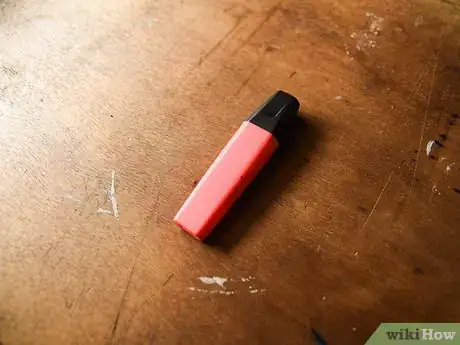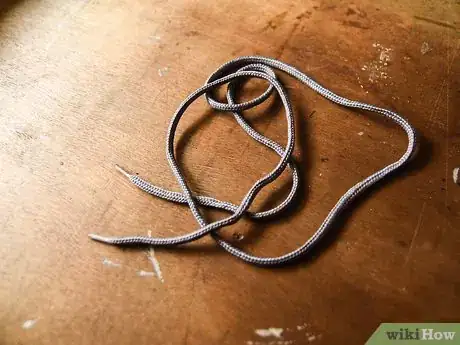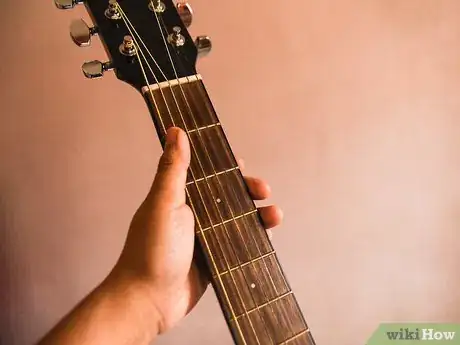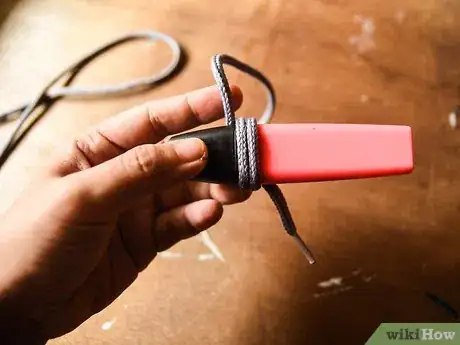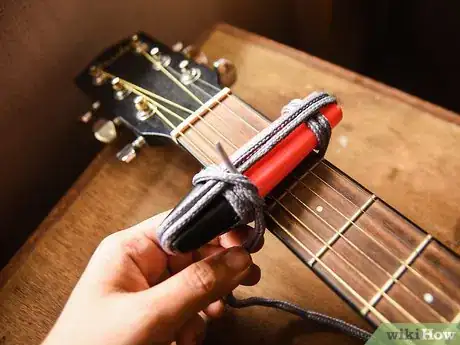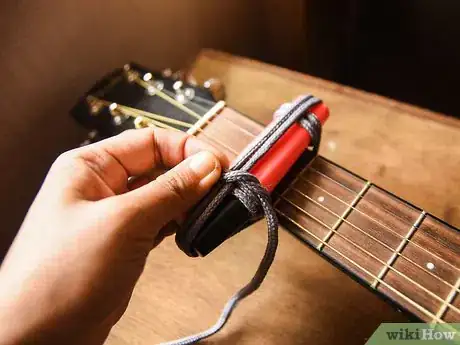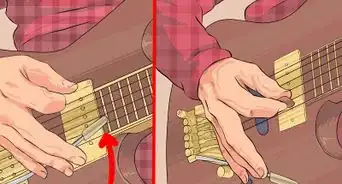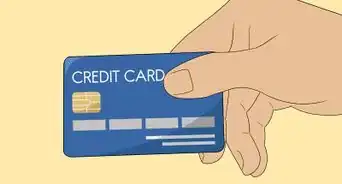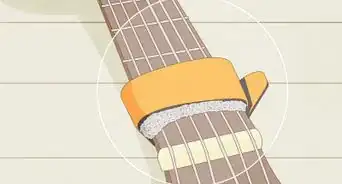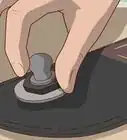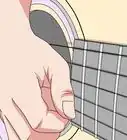X
This article was co-authored by wikiHow Staff. Our trained team of editors and researchers validate articles for accuracy and comprehensiveness. wikiHow's Content Management Team carefully monitors the work from our editorial staff to ensure that each article is backed by trusted research and meets our high quality standards.
This article has been viewed 194,649 times.
Learn more...
Jamming with fellow work mates while work should be done? You can make your own capo for less than half the price of a retail capo using supplies found in your office drawer. Capos are useful tools for the guitarist to switch keys without learning funky chord shapes.
Steps
Part 1
Part 1 of 2:
Gathering and Preparing the Supplies
-
1Get the base. The base of the capo is the part that makes contact with the strings on your guitar. You have a few options for the base depending on what office supplies you have lying around. You can use a highlighter, pen, marker, or pencil.
- The important thing to consider about the base of your capo is that it is long enough to cover the width of the fretboard.
- If you have a short pencil or another shorter base, test it by comparing its length to the width of the fretboard.[1]
-
2Find a tying device. You also have a few options with connecting the base of the capo to the guitar. The important part about the tying component is that it has enough pressure to hold the strings. You can either use a strong elastic band like a hair tie or rubber band, or you can use a piece of string.
- If you use an elastic band, test it to make sure it is strong enough to hold the base against the strings.
- Test the elastic band by stretching the band. You don’t need to stretch it too far, but make sure it doesn’t break on an initial test.[2]
Advertisement -
3Set up your guitar. Tune up your guitar before attaching the capo. You can either tune to standard tuning (EADGBE) or tune to an alternative tuning. Use a chromatic tuner for the most effective tuning.
Advertisement
Part 2
Part 2 of 2:
Attaching the Capo to the Guitar
-
1Connect the band to the capo. Tie one end of the band or string to the base. Secure a knot of the string near the edge of the base. This will create a permanent knot that is useful for fitting the capo to your guitar.
- Loop the other end of the elastic band or string around your base. Detach the loop before attaching to the guitar.
-
2Connect the capo to the guitar. Put the base across the guitar neck at the fret desired, and loop the other end of the band around the other end of the base. This will secure the base over the strings. Make sure it is attached securely.[3]
- Depending on what elastic band you use, you might need to double loop it to increase the pressure.
- The pressure needs to be high to effectively press down the strings across the fret.[4]
-
3Readjust the tightness. Take it off and tie a knot on one end of the band to make it tighter. Repeat until the strings are pressed firmly against the strings. Test the capo by playing a chord or a few notes.
- When you test the capo, play chords in the open position to test if the open strings sound good. The open strings are the notes that are affected by the capo.[5]
Advertisement
Warnings
- Do not put this on too tight as it may damage the strings/neck.⧼thumbs_response⧽
- Pencils may be sharp, so remember to break the point or it may pierce your skin.⧼thumbs_response⧽
Advertisement
References
- ↑ http://trustyguitar.com/acoustic-guitar-pickup/capo-for-expanding-playing-skills/
- ↑ http://www.bigdiyideas.com/25-cool-diy-guitar-art-projects/
- ↑ http://www.dummies.com/how-to/content/how-to-use-a-capo-on-guitar.html
- ↑ http://trustyguitar.com/acoustic-guitar-pickup/capo-for-expanding-playing-skills/
- ↑ https://www.ultimate-guitar.com/lessons/for_beginners/what_is_a_capo.html
About This Article
Advertisement
